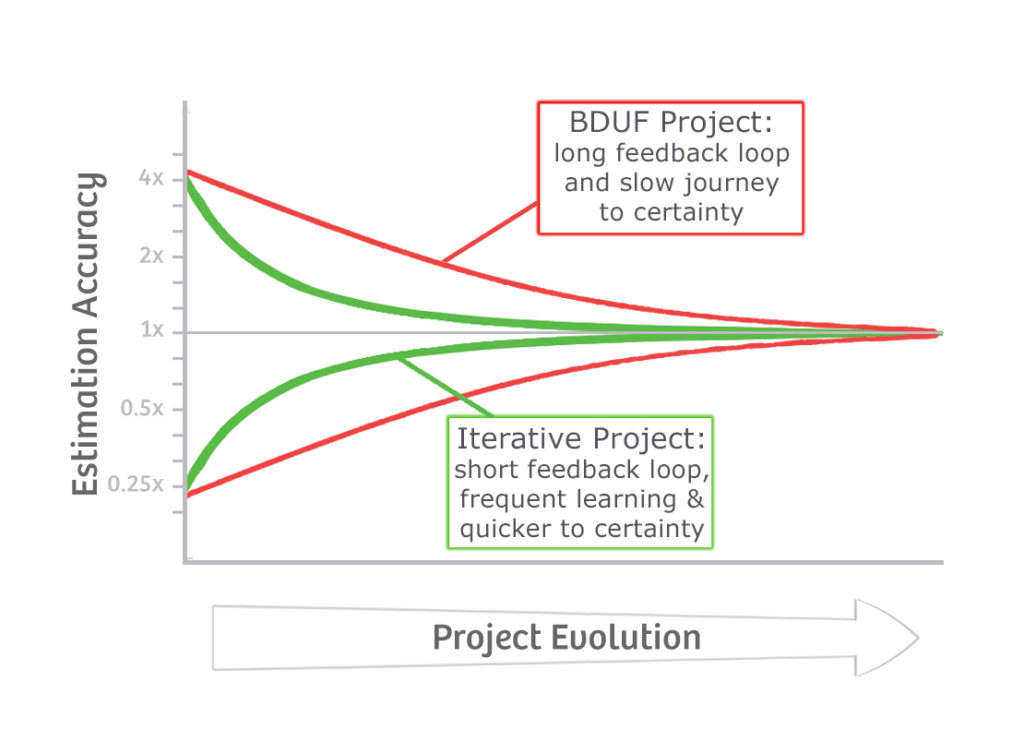What It Is:
Cone of Uncertainty is a concept used in project management, particularly in the domain of software development. It represents the idea that the amount of uncertainty about the scope and duration of a project is greatest at the beginning and decreases over time. The term is often associated with the field of risk management and the challenges of estimating project parameters accurately.
Origin of the Cone of Uncertainty: The Cone of Uncertainty concept was introduced by Barry Boehm in the early 1980s. Barry Boehm is a renowned software engineer, author, and professor who has made significant contributions to software development methodologies and project management.
How to Use It:
Using Cone of Uncertainty in Agile Coaching:
- Early Planning and Estimation:
- During the early stages of an Agile project, acknowledge the inherent uncertainty. Work collaboratively with the team and stakeholders to establish broad estimates based on the information available.
- Iterative and Incremental Planning:
- Embrace an iterative and incremental planning approach. Recognize that as the project progresses, more information becomes available, allowing for more accurate estimates and refined planning.
- Regular Reassessment:
- Encourage the team to regularly reassess and update estimates based on the latest information. This can be done during sprint planning sessions or at other appropriate intervals to adjust plans as needed.
- Risk Management:
- Integrate the Cone of Uncertainty concept into risk management discussions. Identify potential risks and uncertainties early in the project and establish strategies for mitigating or managing them as the team gains more insights.
- Transparent Communication:
- Foster transparent communication within the team and with stakeholders regarding uncertainties. Clearly communicate that estimates are subject to change based on evolving information.
Understanding and embracing the Cone of Uncertainty helps Agile teams manage expectations, adapt to changes, and deliver value in a context where uncertainty is inherent. It provides a framework for navigating uncertainties and making informed decisions as the project progresses.
References:
- “Software Engineering Economics” by Barry Boehm:
- Barry Boehm’s book “Software Engineering Economics” provides a foundational understanding of the Cone of Uncertainty and its implications for software engineering projects.
- Academic Papers by Barry Boehm:
- Explore academic papers authored by Barry Boehm on software engineering and project management. These papers often delve into the theoretical underpinnings of the Cone of Uncertainty.
- Agile and Project Management Texts:
- Many Agile and project management textbooks discuss the Cone of Uncertainty in the context of iterative and Agile methodologies. Look for resources that provide practical insights and examples.
Visit the Agile Coach’s Toolkit for more definitions, models, theorems and stuff.

